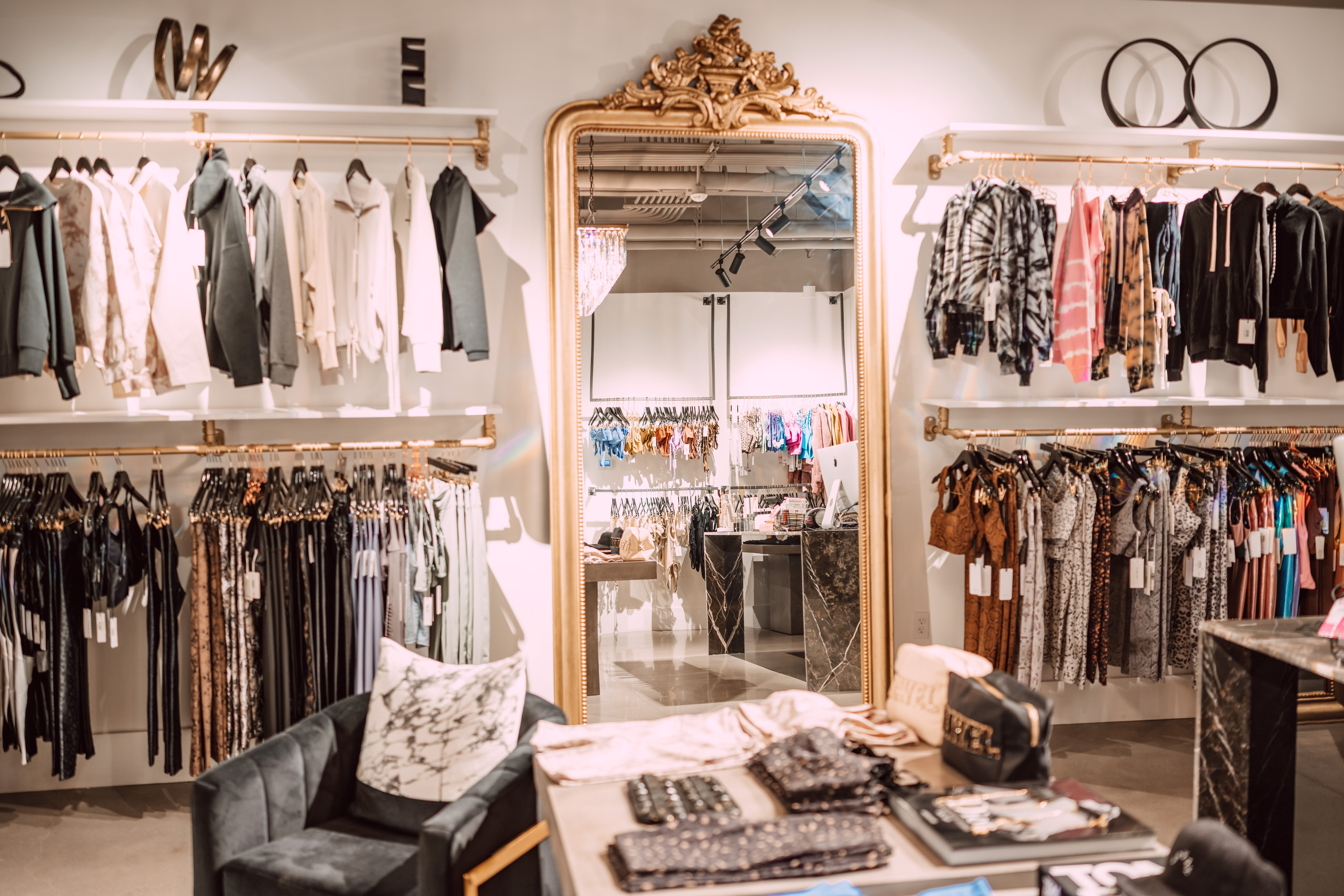Why Boutique Fashion is the Ultimate Selection for Special Design
Why Boutique Fashion is the Ultimate Selection for Special Design
Blog Article
Sustainable Fashion: Exactly How Eco-Friendly Apparel Is Forming the Future of Style
As the fashion business encounters enhancing analysis over its ecological influence, the surge of lasting fashion supplies a promising alternative that lines up design with ecological duty. Employing cutting-edge products such as recycled fibers and plant-based fabrics, together with advanced approaches like electronic and 3D printing, developers are redefining what it suggests to be trendy in the modern age. Concurrently, the expanding popularity of upcycling and thrift culture is promoting a shift in the direction of a round economic situation. How does this movement absolutely affect the future trajectory of style, and what challenges lie in advance in its widespread adoption?
Ingenious Lasting Materials
As the style industry grapples with its environmental impact, cutting-edge lasting materials have actually emerged as a vital service for lowering ecological footprints. These products not just reduce dependence on fossil fuels however likewise lessen unsafe pesticide usage and water intake.
Along with plant-based materials, advancements in biofabrication have resulted in the growth of lab-grown textiles. Mycelium leather, derived from mushroom roots, offers a eco-friendly and functional choice to pet leather. Its manufacturing results in substantially reduced carbon emissions and water usage, making it a more lasting choice for designer looking for to line up with environment-friendly methods.
Recycled products are additionally getting grip, with polyester made from recycled plastic containers standing for a substantial breakthrough. This development not just draws away plastic waste from oceans and landfills but additionally reduces energy usage contrasted to producing virgin polyester. Together, these products emphasize the possibility for a much more sustainable garment industry, leading the way for eco mindful design and production.
Eco-Conscious Manufacturing
Building on the innovations in sustainable materials, the apparel industry is additionally re-evaluating its production processes to better decrease environmental effect. Key methods consist of minimizing water intake, decreasing carbon discharges, and getting rid of hazardous chemicals. By taking on closed-loop systems, manufacturers aim to recycle water and energy successfully, dramatically lessening waste. The combination of renewable resource resources, such as solar and wind power, into production facilities even more stops reliance on nonrenewable fuel sources.
One more critical facet is the reduction of hazardous chemicals traditionally utilized in coloring and finishing fabrics. Eco-conscious manufacturers are moving in the direction of plant-based dyes and waterless dyeing technologies, which not only safeguard regional ecosystems but likewise enhance employee security. Advancements like electronic printing reduce fabric waste and power intake, providing a cleaner option to typical approaches.
Furthermore, openness and traceability have actually become paramount. With the development of blockchain innovation, companies can now supply thorough understandings right into their supply chains, making certain honest and eco pleasant practices at each step. This openness develops consumer count on and encourages brands to maintain high sustainability standards. As the demand for eco-conscious items grows, producers are obliged to innovate, making certain that the future of style is both fashionable and lasting.
The Increase of Upcycling
Upcycling, a transformative practice in lasting style, entails artistically repurposing disposed of products into brand-new, premium products. This ingenious approach not just minimizes waste however likewise reduces the demand for raw products, thus lessening the ecological effect of clothes manufacturing. By reimagining and reconstructing existing products, designers and fashion brand names are able to instill creativity into their collections while promoting environmental obligation.

In addition, the upcycling activity has encouraged local business and independent developers, that often lead in technology as a result of their dexterity and imagination. By profiting from the bountiful accessibility of unused products, these entities add to a round economic climate, demonstrating that fashion can be both fashionable and lasting. Through upcycling, the industry takes considerable strides towards a much more accountable and conscious future.
Thrift Society's Influence
The expanding thrift society substantially reshapes the landscape of lasting style, highlighting the importance of conscious consumption. This social shift encourages customers to accept secondhand garments, thereby lowering the need for new garment manufacturing and reducing ecological effect. Second hand buying not only extends the lifecycle of apparel yet additionally lowers the carbon impact related to production, delivering, and taking care of clothing.
A vital aspect of second hand society is its democratization of fashion. By using a vast range of designs from numerous ages at cost effective prices, thrift shops make style available to a broader target market. This accessibility promotes a feeling of originality and imagination, as customers mix and match distinct pieces to curate tailored closets without adding to the quick style cycle.
In addition, thrift culture promotes circularity in vogue, aligning with the concepts of a round economic situation. By recirculating garments, the cycle of waste is disrupted, and resources are preserved. This practice supports a shift from a direct "take-make-dispose" design to a much more sustainable framework. As more consumers and designers embrace second hand society, the style market is forced to adapt, integrating sustainable methods to satisfy the growing demand for eco-conscious choices.

Future Trends in Fashion
Fashion's evolution is progressively shaped by technical technologies and sustainability-driven initiatives. One popular pattern is the surge of digital style, where virtual garments can be used in increased fact environments, substantially lowering textile waste.
Moreover, the integration of blockchain technology provides brand-new possibilities in transparency and traceability, allowing consumers to confirm the sustainability qualifications of their apparel. boutique fashion. This ensures accountability in supply chains and promotes honest sourcing techniques. 3D printing is yet an additional advancement that assures to change manufacturing processes by enabling on-demand manufacturing, thus decreasing excess stock and waste
Furthermore, the advancement of bio-fabricated materials, such as lab-grown leather and plant-based textiles, presents sustainable alternatives to conventional materials. These developments reduce reliance on animal items and resource-intensive plants. As these modern technologies grow, they are poised to transform the fashion landscape, merging design with sustainability. The future of style, consequently, hinges on a smooth mix of modern technology, technology, and eco-friendly duty.
Verdict
The makeover of the fashion industry via sustainable practices shows a pivotal shift towards ecological liability. This advancement not just straightens style with environmental sustainability however also sets a precedent for future you can find out more trends concentrated on responsibility and advancement.
As the style industry deals with increasing scrutiny over its ecological influence, the rise of sustainable fashion offers an appealing option that straightens design with ecological obligation.As the fashion market grapples with its ecological influence, cutting-edge sustainable materials have actually emerged as a crucial option for lowering eco-friendly impacts. Together, these products highlight the possibility for a more sustainable fashion industry, leading the way for environmentally conscious style and production.
Building on the developments in lasting products, the style market is likewise re-evaluating its manufacturing processes to further decrease environmental impact. boutique fashion.Upcycling, a transformative practice in sustainable style, entails artistically repurposing discarded materials right into brand-new, high-quality products
Report this page